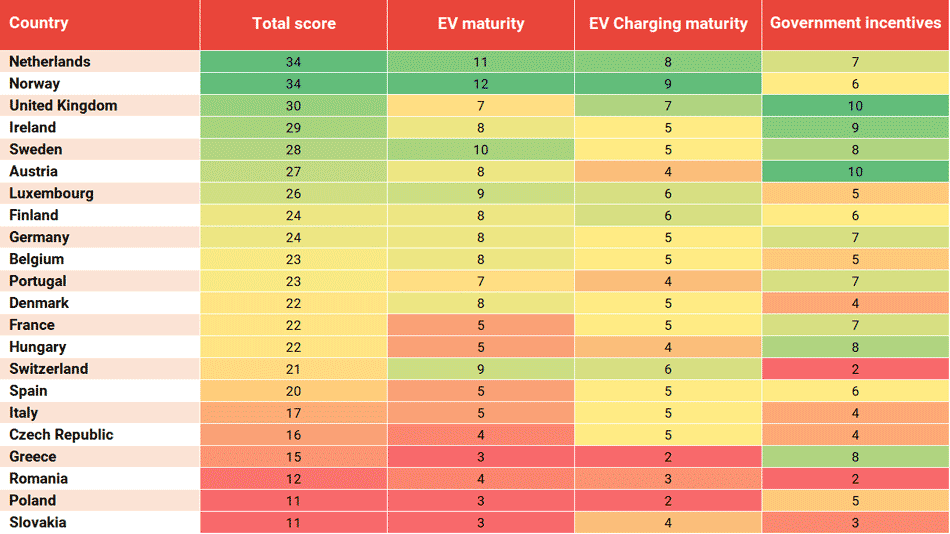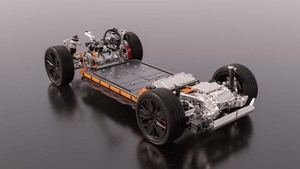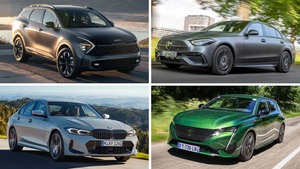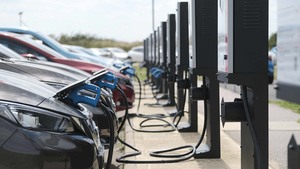If you are looking at implementing a pan-European electric vehicle policy then you are clearly on the right road. However, not all countries are ready with sufficient charging infrastructure and EV markets in general, are unsurprisingly, more mature in certain countries.
A recent study has revealed a gap between the countries that are best prepared to adopt EVs and the worst prepared. Across 22 countries, the best performers are three times more ready to go electric than the worst.
The Netherlands, Norway and the UK lead the way, while Romania, Poland and Slovakia are at the bottom of the table, surprisingly next to major markets such as Italy and Spain.

The study produced an index based on:
- the maturity of the EV market in a country
- the maturity of a country’s public charging infrastructure
- government incentives to drive a battery-powered vehicle.
The results show that the Netherlands, Norway and United Kingdom are now the best prepared countries in Europe for the electric vehicle switch. The Netherlands and Norway are the most mature EV markets, thanks to a steady growth in EV registrations and the increasing availability of charging infrastructure. Government incentives are stabilising.
Ireland and the United Kingdom improved their EV Readiness ranking significantly compared to last year. In part due to better charging infrastructure, a higher percentage of EV registrations and more attractive government incentives.
Charging Infrastructure in EV Markets
The Index tracked a 73% increase in public charging stations in 2019, compared to the previous year, and the number of fast chargers now stands at over 4,000 for the continent. In terms of the charging infrastructure, Norway and the Netherlands have the best ratio of chargers per inhabitant, while Greece, Poland and Romania at the bottom of the table.
Across Europe almost every government now offers generous incentives to support the uptake of EVs, and Austria, Greece, Hungary, Ireland, Poland and the UK have tax systems which deliver the biggest benefits to EV drivers compared to drivers with a diesel car.
The need to change
With about half of all vehicles on European roads registered to corporate organisations, businesses have an important role to play in decarbonising road transport. Switching to EV or creating a policy that offers them is one of the easiest ways for companies to reduce their environmental footprint.
It is also the duty of Policymakers to continue to invest in public charging infrastructure and to incentivise EV uptake until electric becomes the common sense choice for all drivers.
Fleet360 can be your EV partner
At Fleet360 we have helped numerous companies with the transition from the “internal combustion engine” fleet to a mixed fleet including electrified vehicles mainly fully electric vehicles and plug-in hybrid vehicles.
We have mapped mobility patterns of drivers using our CoPilot smart phone application completed with or only using our online survey. This Mobility Pattern mapping allows to direct the right drivers to the correct power trains helping to convince drivers in their change process. Remarkably approx. 65% of the drivers can drive a fully electric vehicle within a large comfort range.
We have made TCO comparison calculations including the country specific taxation elements and translated that into new updated car policies addressing some (PH)EV specific topis like home charging, fast charging etc….
Do not hesitate to reach out to our very knowledgeable team that have been driving electric vehicles for the last 5 years with a combined mileage of over 250.000 km.
READ MORE:
Switching to EV
The EV Outlook



